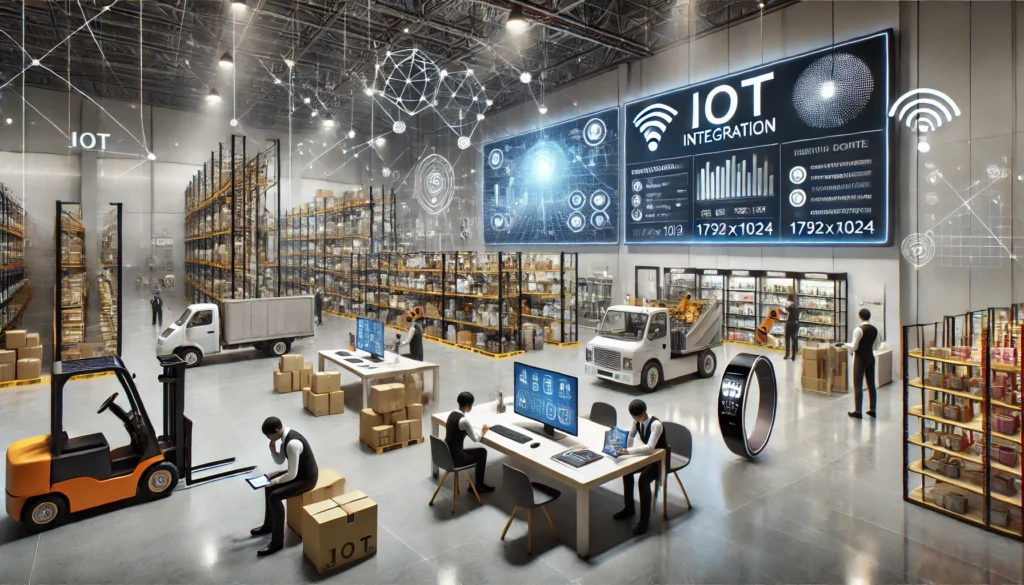
1. Introduction to IoT in Business
What is IoT?
The Internet of Things, or IoT, isn’t just a buzzword—it’s a revolutionary technology shaping our world. Imagine countless devices, from coffee makers to industrial machines, connected and communicating seamlessly. This network of connected devices can collect, exchange, and analyse data, offering unprecedented insights and control over our environment. But what does this mean for businesses?
Historical Context of IoT in Business
IoT’s journey in business began with simple applications like tracking inventory with RFID tags but has since evolved into complex systems that manage everything from logistics to customer interactions. The evolution has been driven by the need for greater efficiency and the opportunities to innovate business models. As technology has matured, so too has its integration into the very fabric of business operations.
Importance of IoT in Today’s Market
In today’s hyper-competitive environment, IoT stands out as a key differentiator. By leveraging IoT, businesses can streamline operations, reduce costs, and enhance customer satisfaction. It’s not just about being technologically advanced; it’s about being smarter, faster, and more connected than the competition. How can your business afford to ignore this?
2. Key Benefits of IoT for Businesses
Enhanced Operational Efficiency
IoT devices automate and optimise processes that were once manual and time-consuming, from real-time inventory management to predictive maintenance of equipment. This not only saves valuable time but also reduces human error, ensuring operations are smooth and disruptions are minimized.
Improved Customer Experience
Imagine a world where your fridge can detect you’re out of milk and order it for you. That’s the potential of IoT. It personalizes customer experiences, making them more interactive and responsive. For businesses, this means happier customers and more precise targeting in marketing efforts.
Data-Driven Decision Making
With IoT, every device becomes a source of data. This data, when analysed, can reveal patterns and insights that were previously invisible. Businesses can use this information to make informed decisions about nearly every aspect of their operations, from supply chain logistics to customer preferences. Isn’t it time your business decisions were backed by solid data?
3. IoT Applications in Different Industries
Manufacturing and Industrial IoT
In manufacturing, IoT is truly revolutionary. It transforms traditional factories into smart factories where machinery and equipment can communicate to optimize production processes. The result? Higher quality products, fewer production errors, and reduced operational costs.
Retail and Consumer Goods
In retail, IoT technology enhances the shopping experience by integrating smart shelves that monitor inventory in real-time and interactive kiosks that provide personalised shopping recommendations. It’s not just about selling more; it’s about selling smarter.
Healthcare and Medical Devices
The healthcare industry benefits immensely from IoT. From wearable devices that track patient health metrics to smart beds in hospitals that monitor patients’ conditions, IoT enhances patient care and improves treatment outcomes. Imagine a healthcare system that anticipates needs rather than just reacting to them!
4. Challenges and Risks of Implementing IoT
Security and Privacy Concerns
Let’s face it, the more devices you have connected, the bigger your digital footprint. This isn’t just about having more emails to sort through; it’s about opening up new doors for potential security breaches. With IoT, every device connected is a potential entry point for cyber-attacks. Ensuring robust security protocols is not just advisable; it’s essential. After all, who wants to be the weak link in the chain?
Integration with Existing Systems
Imagine trying to fit a square peg into a round hole. That’s often what integrating new IoT technologies with old systems feels like. Compatibility issues can arise, leading to increased downtime and higher costs as you try to make everything work seamlessly together. It’s a bit like conducting an orchestra where every musician is playing a different tune!
Cost and Resource Allocation
Adopting IoT technology doesn’t just drain your brain—it can drain your wallet too! The initial investment in IoT can be steep, and that’s before considering ongoing maintenance costs. Plus, you’ll need skilled staff to manage these systems. It’s like planting a tree; you need to nurture it before you can enjoy the shade.
5. Future Trends in IoT for Businesses
AI and IoT Integration
Picture this: IoT meets artificial intelligence. Now, not only are your devices connected, but they’re smart too. AI can analyze the data from IoT devices to predict trends, automate tasks, and even make decisions. This isn’t just a step forward; it’s a leap towards a future where businesses operate on autopilot, guided by the invisible hand of AI.
Edge Computing and IoT
As we connect more devices, sending all that data back and forth to a central server becomes a bit like trying to drink from a fire hose—overwhelming, right? That’s where edge computing comes in. By processing data locally on the device, rather than in a distant data center, response times drop, and efficiency soars. It’s like having your cake and eating it too, but faster.
5G and Its Impact on IoT
The advent of 5G is like turbocharging your internet connection. This new technology promises faster speeds, more reliable connections, and the ability to connect more devices than ever. For IoT, this means more real-time data processing and smoother communications between devices. Imagine a highway with no speed limits, where information flows faster than ever before.
6. Case Studies of Successful IoT Implementations
Case Study: Smart Warehousing Solutions
Consider a warehouse where every item knows its place and can tell you how many of its friends are left on the shelf. IoT enables smart warehouses, where automation and real-time data collection lead to fewer errors, faster processing, and reduced costs. It’s not just about storing stuff; it’s about transforming spaces into smart, self-managing ecosystems.
Case Study: IoT in Healthcare Monitoring
In healthcare, IoT devices are not just gadgets; they’re lifesavers. Wearable devices that monitor heart rates, blood sugar levels, and other vital signs can provide real-time data to healthcare providers, allowing for timely interventions. This technology isn’t just making waves; it’s making miracles happen every day.
Case Study: Retail and Smart Shelves
Imagine walking into a store where the shelves know more about the products than the staff do. In the world of retail, IoT-powered smart shelves monitor inventory in real-time, automatically reorder stock, and even adjust pricing on the fly. It’s a shopping revolution that’s not just about selling, but about engaging customers in new and innovative ways.
7. How to Get Started with IoT in Your Business
Assessing Business Needs
Before jumping on the IoT bandwagon, it’s crucial to take a step back and ask yourself: What problems are you trying to solve? Identifying specific challenges within your operations that IoT can address is the first step toward a meaningful integration. It’s a bit like diagnosing before prescribing—knowing where the pain points are helps you apply the right solutions.
Choosing the Right IoT Solutions
Once you’ve pinpointed your needs, the next step is to find the IoT technologies that best fit your business. This isn’t a one-size-fits-all situation; it’s more about custom tailoring. From sensors and devices to platforms and networks, selecting the right components that align with your business goals is critical. Think of it as assembling your very own tech wardrobe—what pieces do you need to complete your look?
Planning and Implementation Strategies
With your IoT pieces picked out, how do you put them together? Developing a strategic implementation plan is essential. This includes setting up timelines, defining milestones, and determining resource allocation. Consider this the blueprint of your IoT journey—without it, you’re navigating without a map. Also, don’t forget training your team. After all, what’s the point of having sophisticated tools if no one knows how to use them?
8. Conclusion
Recap of IoT’s Impact on Businesses
IoT is transforming businesses by making them more efficient, connected, and responsive to customer needs. From enhancing operational efficiency to revolutionizing customer interactions, the potential is vast. But it’s not just about the benefits; the challenges, such as security and integration, remind us that this journey is a marathon, not a sprint.
The Future Outlook of IoT in Business
Looking forward, the trajectory of IoT in business is poised for even greater expansion. Innovations in AI, 5G, and edge computing are set to push the boundaries of what’s possible, turning today’s innovations into tomorrow’s essentials. Imagine a future where businesses not only react to changes but anticipate them with precision.
Final Thoughts
Embracing IoT is more than adopting new technology—it’s about evolving with the times. For businesses ready to take the plunge, the potential for growth and innovation is boundless. Are you ready to transform your business and lead it into a new era of connectivity and intelligence?
9. References and Further Reading
While this article provides a comprehensive overview of the role of IoT in modern businesses, the journey doesn’t stop here. For those eager to dive deeper, a wealth of resources are available. Engaging with technical journals, IoT publications, and industry reports can provide further insights and case studies. Additionally, attending IoT conferences and workshops can enhance understanding and networking opportunities in this rapidly evolving field.

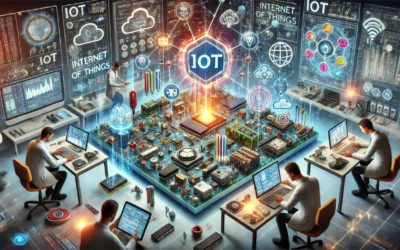
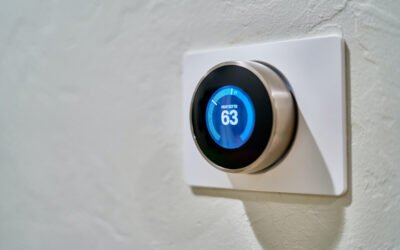
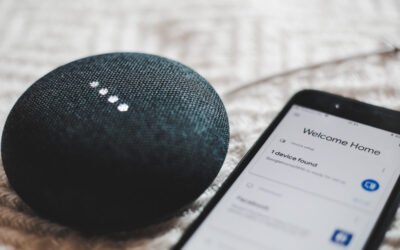
0 Comments